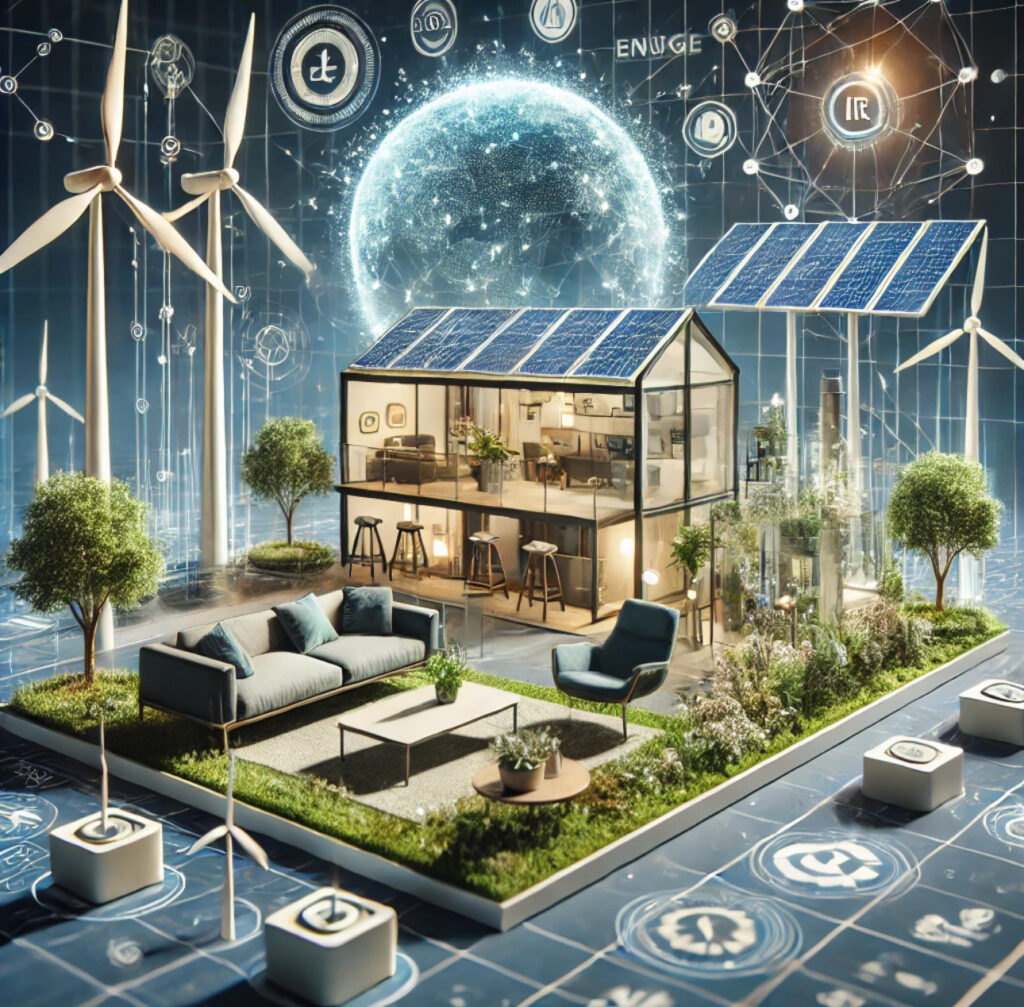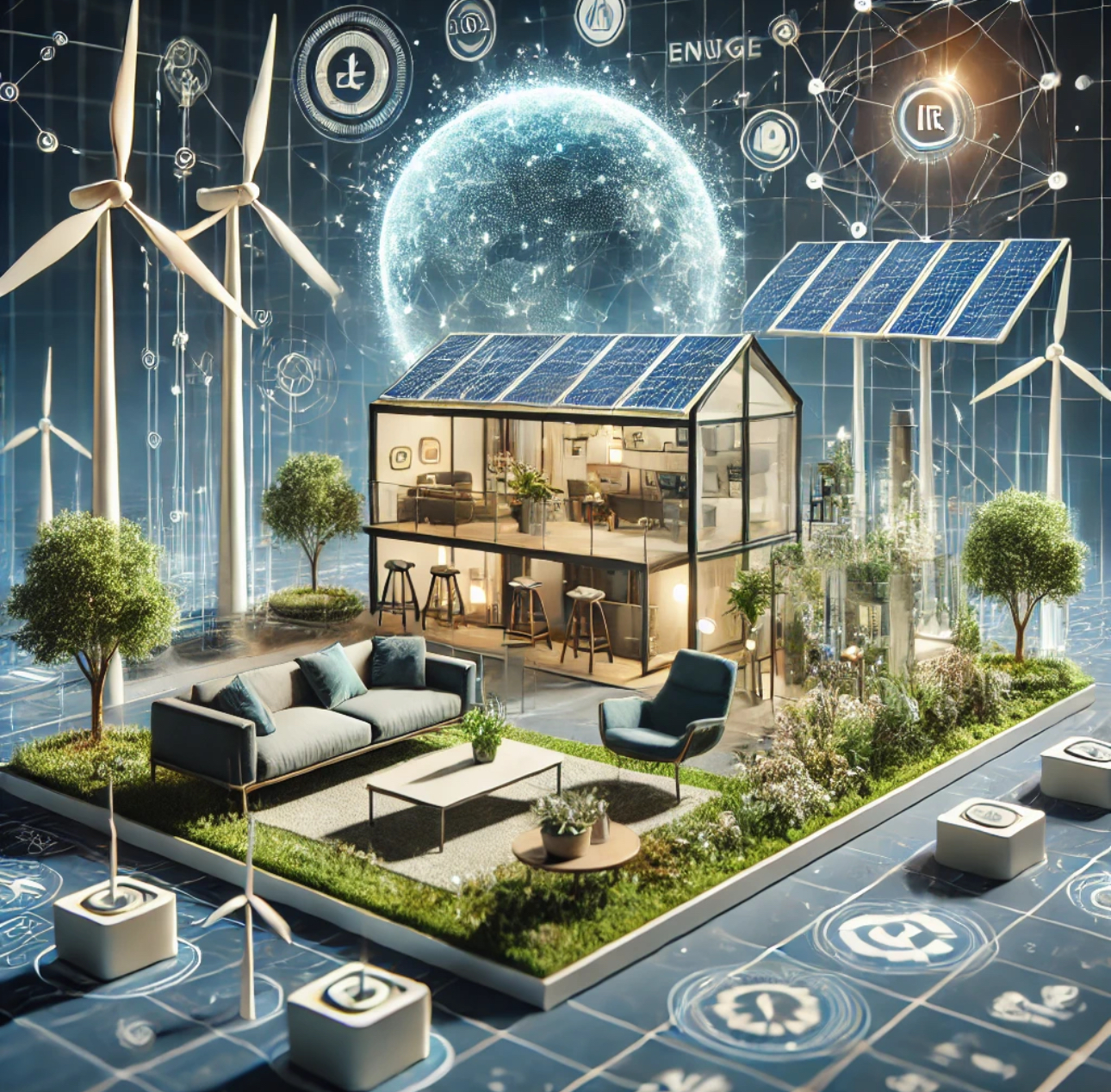In today’s rapidly evolving world, technology and sustainability are merging to address some of the most pressing environmental challenges. The rise of sustainable tech is not just a trend but a necessary progression towards a greener future. This article delves into the groundbreaking innovations in renewable energy, eco-friendly materials, and smart home solutions that are contributing to a more sustainable lifestyle.

Key Takeaways
- Sustainable technology is crucial for combating climate change and promoting environmental conservation.
- Innovations in renewable energy reduce dependence on fossil fuels and lower greenhouse gas emissions.
- Eco-friendly materials and circular economy practices minimize waste and resource depletion.
- Smart home solutions enhance energy efficiency and support sustainable living habits.
- Adoption of sustainable tech drives economic growth and creates jobs in green industries.
The Emergence of Sustainable Technology
Sustainable technology, often referred to as “green tech,” encompasses innovations that consider environmental impacts throughout their lifecycle. These technologies aim to reduce resource consumption, minimize waste, and mitigate negative environmental effects while promoting economic and social sustainability.
Why Sustainable Tech Matters
- Environmental Challenges: Addressing climate change, pollution, and resource scarcity requires innovative solutions.
- Global Commitments: International agreements like the Paris Agreement emphasize the need for sustainable practices.
- Consumer Awareness: Growing public consciousness is driving demand for eco-friendly products and services.
“Harnessing technology for sustainability is not just an option; it’s an imperative for the future of our planet.”
Advancements in Renewable Energy
Renewable energy technologies are at the forefront of sustainable tech, offering cleaner alternatives to fossil fuels.
Solar Power Innovations
- Perovskite Solar Cells: Provide higher efficiency at lower costs compared to traditional silicon cells.
- Solar Storage Solutions: Enhanced batteries enable consistent energy supply, even when the sun isn’t shining.
- Building-Integrated Photovoltaics (BIPV): Integrate solar panels into building materials like windows and roofs for seamless energy generation.
Wind Energy Developments
- Offshore Wind Farms: Utilize stronger offshore winds to generate more electricity.
- Vertical Axis Wind Turbines: Compact designs suitable for urban settings and individual buildings.
- Smart Wind Turbines: Incorporate AI and IoT for optimized performance and predictive maintenance.
Emerging Renewable Sources
- Hydrogen Fuel Cells: Generate electricity through chemical reactions, emitting only water vapor.
- Tidal and Wave Energy: Harness the power of oceans for consistent energy production.
- Geothermal Energy: Utilize Earth’s internal heat for sustainable power generation.
Eco-Friendly Materials and Sustainable Manufacturing
Innovations in materials science contribute significantly to sustainability by reducing environmental footprints.
Biodegradable and Recycled Materials
- Bioplastics: Made from renewable resources like corn starch, reducing reliance on petroleum-based plastics.
- Recycled Textiles: Transforming waste fabrics into new clothing items, reducing landfill waste.
Sustainable Construction Materials
- Cross-Laminated Timber (CLT): An eco-friendly alternative to steel and concrete with a lower carbon footprint.
- Hempcrete: A bio-composite made from hemp fibers and lime, offering excellent insulation and carbon absorption.
Circular Economy Practices
- Product Life Extension: Designing products for durability, repairability, and upgradability.
- Resource Recovery: Recovering and reusing materials at the end of a product’s life cycle.
Smart Home Solutions for Sustainable Living
Smart technologies are transforming homes into energy-efficient environments.
Energy Management Systems
- Smart Thermostats: Devices like Nest adjust heating and cooling based on occupancy and preferences.
- Automated Lighting: Sensors and timers reduce energy consumption by turning off lights when not needed.
- Energy Monitoring Apps: Provide real-time data on energy use, helping homeowners make informed decisions.
Water Conservation Technologies
- Smart Irrigation Controllers: Adjust watering schedules based on weather forecasts and soil moisture levels.
- Low-Flow Fixtures: Faucets and showerheads designed to reduce water usage without compromising performance.
Waste Reduction Solutions
- Smart Appliances: Refrigerators that suggest recipes based on available food, reducing waste.
- Composting Systems: In-home composters convert organic waste into fertilizer.
The Electric Vehicle Revolution
Electric vehicles (EVs) are a cornerstone of sustainable transportation.
Advancements in EV Technology
- Extended Range Batteries: Innovations in battery technology allow for longer travel distances.
- Charging Infrastructure: Expansion of fast-charging stations makes EVs more convenient.
- Vehicle-to-Grid Integration: EVs can supply energy back to the grid during peak demand times.
Environmental Benefits
- Zero Emissions: EVs produce no tailpipe emissions, reducing air pollution.
- Renewable Charging: When powered by renewable energy sources, EVs offer a fully sustainable transport solution.
Sustainable Tech in Industry and Agriculture
Industries are adopting sustainable technologies to enhance efficiency and reduce environmental impact.
Green Manufacturing
- 3D Printing: Reduces waste by using only the necessary materials for production.
- Renewable Energy Integration: Factories powered by solar or wind energy decrease reliance on fossil fuels.
Precision Agriculture
- Drones and Sensors: Monitor crop health and optimize resource use, reducing waste.
- Vertical Farming: Indoor farms use less land and water while increasing yield.
Carbon Capture and Storage (CCS)
- Direct Air Capture: Technologies that remove CO2 from the atmosphere for storage or reuse.
- Utilization of Captured Carbon: Converting CO2 into useful products like fuels or building materials.
Economic and Social Impact
Sustainable tech is not only beneficial for the environment but also drives economic growth and social progress.
Job Creation
- Green Jobs: Growth in sectors like renewable energy, sustainable construction, and environmental management.
- Skill Development: Demand for expertise in sustainability fosters new educational programs.
Economic Growth
- Innovation and Competitiveness: Sustainable tech spurs innovation, leading to new products and services.
- Investment Opportunities: Attracts investors interested in long-term environmental and economic returns.
Social Benefits
- Improved Health: Reduced pollution leads to better public health outcomes.
- Energy Access: Renewable technologies provide affordable energy solutions in developing regions.
Challenges and the Path Forward
While sustainable tech holds great promise, challenges must be addressed to realize its full potential.
Barriers to Adoption
- High Initial Costs: Upfront investment can be a hurdle for widespread adoption.
- Infrastructure Needs: Requires development of supporting infrastructure, such as charging stations for EVs.
- Regulatory Hurdles: Policy changes are needed to incentivize sustainable practices.
Overcoming Challenges
- Government Incentives: Subsidies, tax credits, and grants can encourage adoption.
- Public-Private Partnerships: Collaboration accelerates development and deployment of sustainable technologies.
- Education and Awareness: Informing the public about benefits fosters acceptance and demand.
The Future of Sustainable Technology
The continued evolution of sustainable tech is essential for meeting global environmental goals.
Integration of AI and IoT
- Smart Grids: AI optimizes energy distribution, reducing waste.
- Predictive Maintenance: IoT devices detect issues before they become major problems.
Global Collaboration
- International Agreements: Countries working together amplify impact.
- Knowledge Sharing: Open-source platforms allow for the global spread of innovations.
Conclusion
The rise of sustainable technology marks a significant shift towards a greener, more sustainable future. Innovations in renewable energy, eco-friendly materials, and smart home solutions are not just reducing our environmental footprint but also enhancing quality of life and economic prosperity. Embracing these technologies is crucial for individuals, businesses, and governments alike as we collectively work towards a sustainable and resilient world.
FAQ
What is sustainable technology?
Sustainable technology, or “green tech,” refers to technological advancements that aim to reduce negative environmental impacts by using resources more efficiently, producing less waste, and promoting ecological balance throughout their lifecycle.
How does renewable energy contribute to sustainability?
Renewable energy sources like solar, wind, and hydro power generate electricity without emitting greenhouse gases, reducing reliance on fossil fuels and mitigating climate change. They are essential for a sustainable energy future.
What are some examples of eco-friendly materials?
- Bioplastics: Made from renewable resources and are often biodegradable.
- Cross-Laminated Timber: Sustainable wood product used in construction.
- Recycled Metals and Plastics: Materials recovered and reused from waste.
How do smart home solutions promote sustainability?
Smart home technologies optimize energy and water use, reduce waste, and enhance efficiency. Examples include smart thermostats, energy-efficient appliances, and automated lighting systems.
What role do electric vehicles play in sustainable tech?
Electric vehicles reduce greenhouse gas emissions by eliminating tailpipe emissions. They are crucial for sustainable transportation, especially when charged with renewable energy sources.
How does sustainable tech impact the economy?
Sustainable tech drives economic growth by creating new industries and jobs, fostering innovation, and attracting investment. It also leads to cost savings through increased efficiency and resource management.
What challenges does sustainable tech face?
Challenges include high initial costs, lack of infrastructure, regulatory barriers, and the need for widespread consumer adoption. Addressing these challenges requires collaboration between governments, businesses, and consumers.
How can individuals support sustainable technology?
- Adopt Green Technologies: Use renewable energy, electric vehicles, and smart home devices.
- Support Sustainable Brands: Choose products from companies committed to environmental responsibility.
- Advocate for Policies: Encourage government action to support sustainable initiatives.
By embracing and supporting sustainable technology, we can all play a part in shaping a greener future. These innovations not only address environmental concerns but also pave the way for economic growth and improved quality of life. The time to act is now, and every effort counts toward building a sustainable world for generations to come.


Leave a Reply